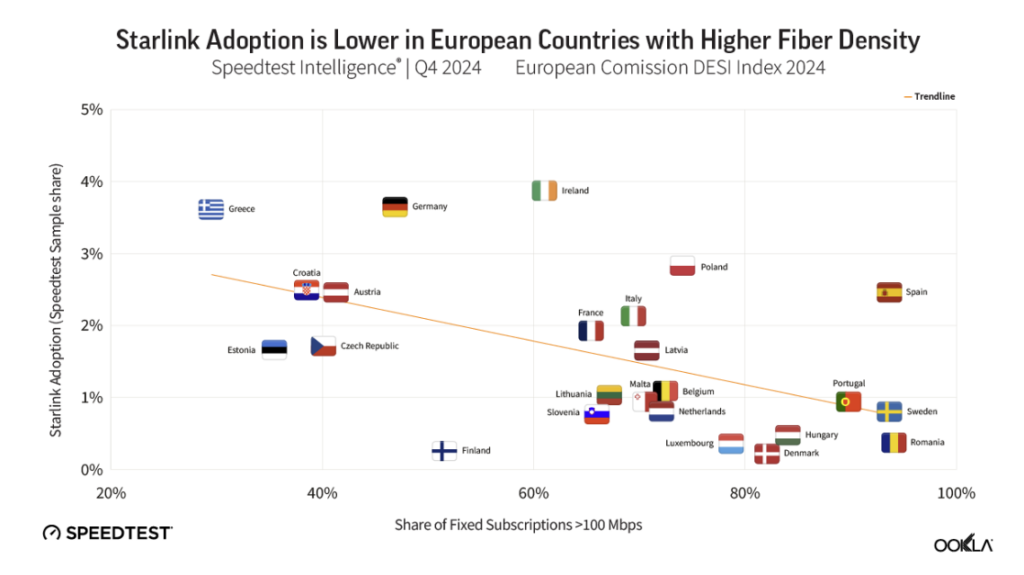Source:https://www.ookla.com/articles/starlink-europe-q1-2024
Unlike latency, which has seen significant and sustained improvements across most European countries over the past two years in Speedtest Intelligence data, Starlink’s download speed performance has faced growing pressure as the service scaled and network usage increased.
Between Q4 2022 and Q4 2023, Central European countries saw some of the steepest declines in median download speeds. In Germany, speeds fell by 31%—from 94.37 Mbps to 65.44 Mbps—while Switzerland recorded a 24% drop, going from 136.03 Mbps to 103.88 Mbps. Combined with the backdrop of improving median download speeds in terrestrial fixed broadband—driven by accelerating FTTH deployment and adoption—Starlink’s competitiveness on speed eroded over this period in many parts of Europe.
For the first time in Q4 2024, there were signs that the successive speed declines observed in previous quarters may have stabilized, with early indications of a potential recovery. However, given quarter-to-quarter variability, it remains to be seen whether this trend will hold in the coming year.
Nonetheless, the timing of these improvements dovetails with the reported jump in the number of Starlink satellites in service from late October last year, likely reflecting the additional capacity afforded by an expanded constellation above Europe.

The higher proportion of Starlink users in Germany among Europe’s largest economies is likely a consequence of its outdated fixed broadband mix. With some of the lowest FTTH coverage in the EU and higher fixed broadband prices than elsewhere, Starlink adoption may be higher in Germany and present an attractive alternative there despite providing lower speeds than in other parts of the continent.


